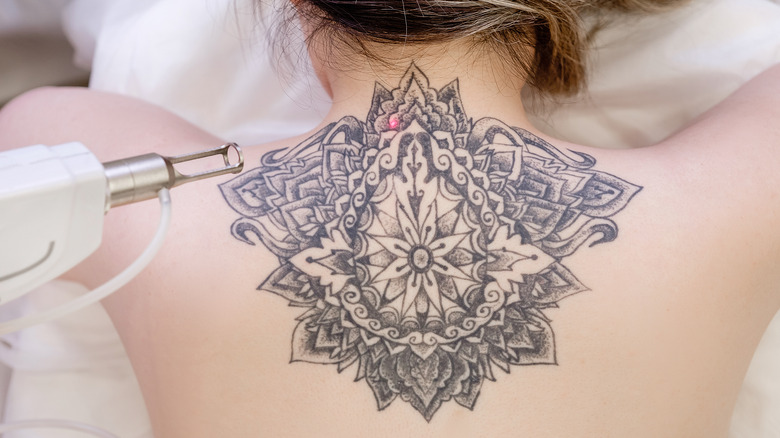views
Understanding the Science Behind Laser Tattoo Removal: A Dubai Perspective
Laser tattoo removal has evolved significantly over the years, becoming a widely accepted method for eliminating unwanted tattoos. This process is not only popular but also considered one of the most effective and safest ways to remove tattoos. The technology behind laser tattoo removal is fascinating and involves a thorough understanding of laser physics, skin anatomy, and the body’s natural healing processes.
The Technology Behind Laser Tattoo Removal
How Lasers Work
Lasers used for Tattoo Removal Dubai are high-intensity light beams that target specific pigments in the skin. These lasers work on the principle of selective photothermolysis, where the light is absorbed by the tattoo ink, causing it to break into smaller fragments. The body then gradually absorbs these fragments and eliminates them through the lymphatic system.
Types of Lasers Used
Different types of lasers are employed for tattoo removal, each designed to target specific colors and depths of ink. The most common lasers used are Q-switched lasers, including the Q-switched Nd, Q-switched Ruby, and Q-switched Alexandrite lasers. Each type has its own wavelength, which allows it to effectively target different colors of ink.
Wavelength and Tattoo Ink
The wavelength of the laser is crucial because it determines which colors of ink can be effectively targeted. For instance, the Q-switched Nd
laser is often used for black and dark ink, while the Q-switched Alexandrite laser is more effective for green and blue pigments. The ability to target specific colors helps in achieving a more thorough removal of the tattoo.
The Tattoo Removal Process
Initial Consultation and Assessment
Before undergoing laser tattoo removal, a thorough consultation is essential. This involves assessing the tattoo’s size, color, age, and depth, as well as the patient’s skin type. This evaluation helps in determining the most appropriate laser technology and treatment plan.
The Treatment Procedure
During the procedure, the patient is given protective eyewear to shield their eyes from the laser light. A cooling device or gel may be applied to the skin to minimize discomfort. The laser is then applied to the tattooed area in short bursts. The light energy from the laser breaks down the ink particles, which are then gradually absorbed by the body.
Post-Treatment Care
After the procedure, the treated area may be red and swollen. It is important to follow post-treatment care instructions, which typically include keeping the area clean and protected, avoiding direct sunlight, and applying prescribed ointments or creams. The healing process varies from person to person, but most individuals experience significant improvement within a few weeks.

Factors Affecting Tattoo Removal
Tattoo Characteristics
The success of laser tattoo removal is influenced by several factors related to the tattoo itself. The color, depth, and type of ink used in the tattoo can affect how well it responds to laser treatment. Black and dark inks usually respond better, while colors like green and blue may require more treatments.
Skin Type and Condition
The patient’s skin type and overall skin condition also play a role in the effectiveness of the treatment. Individuals with lighter skin tones generally achieve better results because the contrast between the skin and ink is more pronounced. However, advancements in laser technology have made it possible to treat a wider range of skin types effectively.
Number of Sessions Required
Tattoo removal is rarely a one-time process. Multiple sessions are often required to achieve the desired results. The number of sessions needed depends on factors such as the tattoo’s size, color, and the patient’s skin type. On average, several treatments spaced several weeks apart are necessary for optimal results.
Potential Risks and Side Effects
Common Side Effects
While laser tattoo removal is generally safe, some common side effects can occur. These include redness, swelling, and minor discomfort in the treated area. These side effects typically resolve on their own within a few days to weeks.
Advances in Laser Tattoo Removal Technology
New Laser Technologies
Recent advancements in laser technology have improved the efficacy and safety of tattoo removal. Newer lasers offer better targeting and faster treatments with reduced discomfort. Additionally, innovations such as picosecond lasers provide more precise and effective results, particularly for colorful or stubborn tattoos.
Enhanced Treatment Techniques
The development of combination therapies, such as using different lasers or integrating other treatments, has also enhanced the overall effectiveness of tattoo removal. These approaches can improve results and reduce the number of sessions required.
Conclusion
Laser tattoo removal has come a long way in terms of technology and effectiveness. Understanding the science behind this procedure helps in appreciating its complexity and the factors that contribute to its success. With continuous advancements in laser technology and treatment techniques, laser tattoo removal remains a leading choice for those seeking to erase unwanted tattoos safely and effectively.






















Comments
0 comment